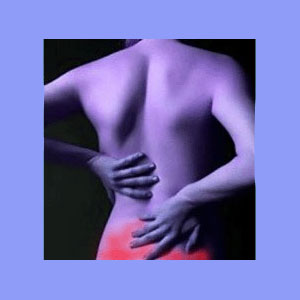
Sciatica in the buttocks is one of the most common and severe symptoms reported by lower body radiculopathy patients. The buttocks are key components of the postural muscles and are instrumental in facilitating many of the common everyday movements we take for granted, such as standing upright and walking. When pain strikes the buttocks, patients typically become debilitated and fear for themselves, since even the slightest movement can set off waves of horrific pain and possibly sciatica spasms.
This dialog will provide some facts about why the buttocks are primary locations of symptomatic activity in both true sciatica and pseudo-sciatica conditions.
Painful Sciatica in the Buttocks
True sciatica is defined as a set of neurological symptoms occurring in the lower body, caused by a spinal source, such as a herniated disc, osteoarthritic condition or abnormal spinal curvature concern. Sciatica should never be a diagnosis unto itself, although this is the way most patients, and even most doctors, perceive it. Sciatica is merely a symptomatic expression of some other causative process.
Pseudo-sciatica is just as prevalent as actual sciatica, although it can originate from a huge number of possible causative conditions.
While spinal issues can and do cause sciatic nerve pain in some patients, many patients with structural lumbar abnormalities are misdiagnosed and the real source of sciatica symptoms is rarely uncovered.
Since sciatica can result from spinal structural issues, muscular compression scenarios, localized and systemic nerve dysfunction, disease processes, blood sugar concerns, tumor formation and oxygen deprivation, accurate diagnosis is never an easy process.
Buttocks Pain Facts
When pain exists primarily in the buttocks, the pain will typically be blamed on a spinal condition in the lower lumbar or lumbosacral spinal regions. Usually this is a theorized compressive neuropathy of one or more of the spinal nerve roots. Remember, since the spinal cord has already evolved into the cauda equina in the lower lumbar spine, central and foraminal canal narrowing can both enact strikingly similar expressions, especially influencing the L4, L5 or S1 nerve roots.
However, buttocks pain may also be suspected to exist due to sacroiliac joint issues or the infamous diagnosis of piriformis syndrome. In my experience, SI joint concerns are usually misdiagnosed, since symptoms are generally localized and do not qualify as true sciatica, although this is not an absolute.
Meanwhile, piriformis syndrome is virtually always a completely incorrect or incomplete diagnostic conclusion. In many patients, the piriformis muscle may indeed be involved. However, the underlying causative process is rarely injury, as speculated, but ischemia, in the majority of cases I have seen. A few cases are obviously focused on the not-so-uncommon anatomical abnormality in which the sciatic nerve travels through the piriformis muscle, rather than below it.
Sciatica in the Buttocks Experiences
The buttocks is a primary location for a great number of lower back pain and sciatica expressions. Pain here is truly crippling and can make normal movement seem impossible. I truly empathize with patients who suffer from severe buttocks pain and the postural and functional issues which accompany these agonizing events. I suffered from these miseries myself for many years and still do to this day.
My advice for chronic or recurrent buttocks pain mirrors my advice on many back pain topics. Concentrate on achieving an accurate diagnosis, for without this often taken for granted factor, there is virtually no hope for a cure. If your pain has not responded to appropriate care time and time again, do not blame the therapy; instead blame the diagnosis.




